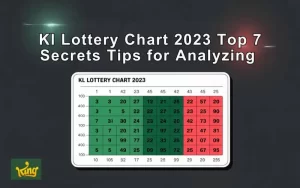Football, or soccer as it is called in some parts of the world, is one of the most popular sports globally. Its massive fan base and exciting nature have made football betting markets a booming industry. However, for beginners, understanding the various betting markets can be quite overwhelming. This guide will take you through some of the most common football betting markets, explain how they work, and provide tips on how to get started.
What Are Football Betting Markets?
In the world of football betting markets, a market refers to the different types of bets you can place on a match. Each market focuses on different aspects of the game, ranging from predicting the outcome of the match to betting on specific events such as goals, cards, and corners. The variety of betting markets allows bettors to choose from a wide array of options, depending on their understanding of the game, preferences, and risk tolerance.
Football betting markets can be broadly categorized into outcome markets, goal markets, corner markets, specials, and over/under markets, among others. Each type of market has its own set of rules and ways in which the odds are calculated.
Outcome Football Betting Markets
The most straightforward and popular football betting markets fall under outcome betting. These markets are based on the result of a match and can be further divided into:
Match Result (1X2)
This is the most common in football betting markets and refers to predicting the outcome of a match. In the 1X2 market:
- 1 stands for a home team victory,
- X stands for a draw,
- 2 stands for an away team victory.
For example, if you place a bet on 1X2 and choose “1” for a home win, you’re predicting that the home team will win the match. If the home team wins, you win the bet; if they lose or draw, you lose the bet.
Double Chance
Double Chance is a variation of the standard 1X2 bet, where you combine two of the possible outcomes. For example:
- 1X means the home team will win or the game will end in a draw.
- X2 means the match will end in a draw or an away win.
- 12 means either team will win, eliminating the draw outcome.
This bet reduces the risk but also provides lower odds compared to a standard 1X2 bet.
Draw No Bet
In this market, you’re football betting markets on one team to win, but if the match ends in a draw, your stake is refunded. This bet removes the draw option from the betting equation, making it safer for bettors who think one team has the edge but want to reduce the risk of a draw.
Goal Markets
Another popular category of football betting markets involves predicting the number of goals that will be scored during a match or the outcome based on individual players’ goal-scoring performance.
Over/Under Goals
The Over/Under market involves betting on the total number of goals scored in a match. The bookmaker sets a line, and you bet on whether the actual number of goals will be over or under that line.
For example:
- Over 2.5 Goals means you’re betting that the total number of goals will be 3 or more.
- Under 2.5 Goals means you’re betting that the total number of goals will be 2 or fewer.
This market doesn’t care about which team wins or loses, only the total number of goals scored.
Both Teams to Score (BTTS)
This market allows you to bet on whether both teams will score during the match. You can place a bet on:
- Yes: Both teams will score at least one goal.
- No: At least one team will fail to score.
This is a popular bet as it doesn’t depend on which team wins, but simply on whether both teams can find the back of the net.
First Goalscorer / Last Goalscorer / Anytime Goalscorer
These bets focus on individual players. In a First Goalscorer bet, you’re predicting which player will score the first goal in the match. A Last Goalscorer bet focuses on predicting who will score the last goal of the match. The Anytime Goalscorer bet involves predicting any player to score at any point during the game.
Corner Markets
In addition to betting on goals and match outcomes, you can also bet on other aspects of a football game, such as the number of corners. Some popular corner-related betting markets include:
Total Corners
This market is similar to the Over/Under market for goals. The bookmaker sets a line for the total number of corners in a match, and you bet whether the actual number of corners will be over or under that line.
Team to Win Most Corners
Here, you’re betting on which team will win the most corners in the match. This can be an interesting market if you’re familiar with the playing styles of the teams involved, as some teams tend to attack more aggressively, earning more corners in the process.
Tips for Betting on Football Markets

As a beginner, here are a few tips to help you navigate football betting markets:
- Do Your Research: Always analyze the teams, players, and match history before placing your bet. Factors like current form, injuries, and head-to-head records can all influence the outcome.
- Start with Simple Bets: Begin with straightforward markets like the 1X2 or Over/Under. These are easier to understand and often give beginners the best chance to win.
- Manage Your Bankroll: Set a budget for how much you’re willing to bet and stick to it. Never bet more than you can afford to lose.
- Look for Value: Don’t just follow the crowd. Look for betting odds that you feel represent value, even if they seem a bit more risky.
Handicap Betting
Handicap betting is popular in football to level the playing field when there’s a clear favorite and underdog. In this market, a team is given a “handicap” to either add or subtract from the final score.
For example:
- Asian Handicap: The bookmaker gives the underdog a “head start” (e.g., +1 goal) or takes goals away from the favorite (e.g., -1 goal). This eliminates the possibility of a draw, as one team will either win or lose based on the handicap.
Handicap betting is especially useful in matches where one team is clearly stronger than the other, as it gives bettors a chance to make the bet more competitive.
Special Betting Markets
These markets focus on unique events that might happen during the match. Some examples include:
Number of Cards (Yellow/Red)
In this market, you predict how many yellow or red cards will be shown during the match. For example, you might bet on Over 3.5 Yellow Cards, meaning you expect there to be 4 or more yellow cards shown during the game.
Player to be Booked
This bet allows you to wager on a specific player to receive a yellow or red card during the match. It’s ideal if you know a player has a reputation for being aggressive or frequently getting booked.
Time of First Goal
You can also bet on when the first goal will be scored in the match. Bookmakers may offer time brackets (e.g., 0-10 minutes, 11-20 minutes) for when the first goal will be scored.
Discover why live football betting offers an adrenaline rush that pre-match bets just can’t match! Dive into our latest post and learn how real-time action can make every moment more thrilling.
Conclusion
Football betting can be an exciting and rewarding experience, but it requires understanding the different markets and making informed decisions. By focusing on the various types of bets available, from simple match results to more specialized markets like goalscorers and corners, you can enhance your betting strategy. With practice and research, you’ll become more comfortable with these markets, allowing you to enjoy football betting in a fun and responsible way.
FAQs
What is the most common football betting market?
The most common football betting market is the Match Result (also known as 1X2). In this market, you bet on one of three possible outcomes: a home win (1), a draw (X), or an away win (2).
What does ‘Over/Under’ betting mean in football?
In Over/Under betting, you bet on whether the total number of goals scored in a match will be over or under a specified number. For example, you might bet on Over 2.5 goals, meaning you expect more than two goals to be scored in the match.
What is a handicap bet in football?
A handicap bet is used to level the playing field when there is a significant difference between two teams. The stronger team is given a handicap (e.g., -1 goal), while the underdog is given an advantage (e.g., +1 goal). The final score is adjusted based on the handicap, and the bet is settled accordingly.







